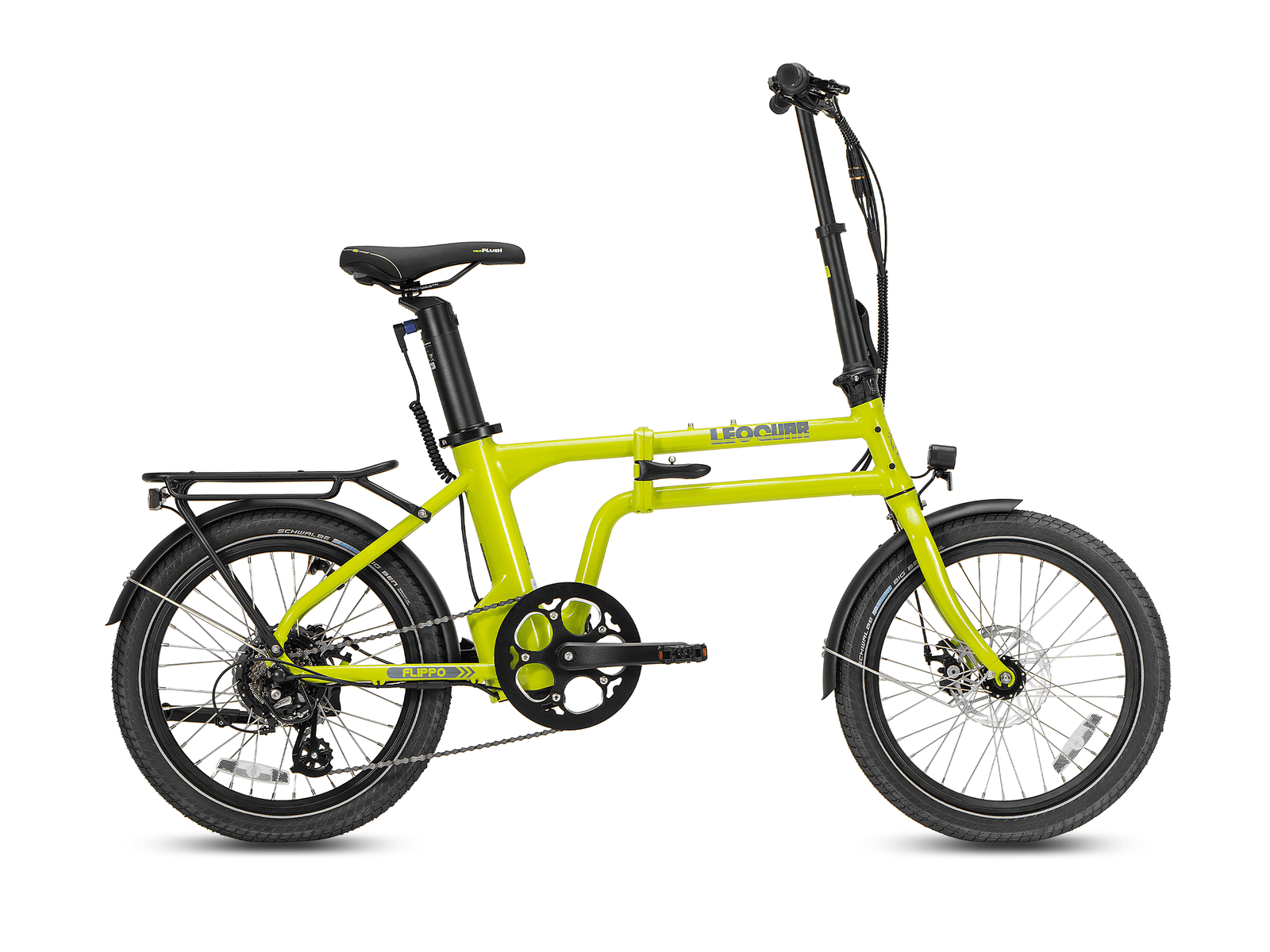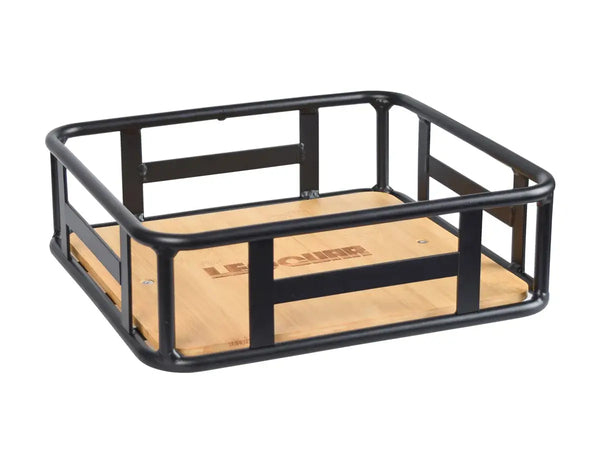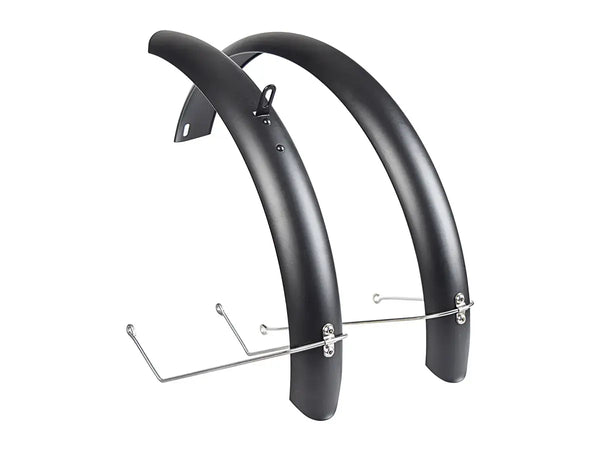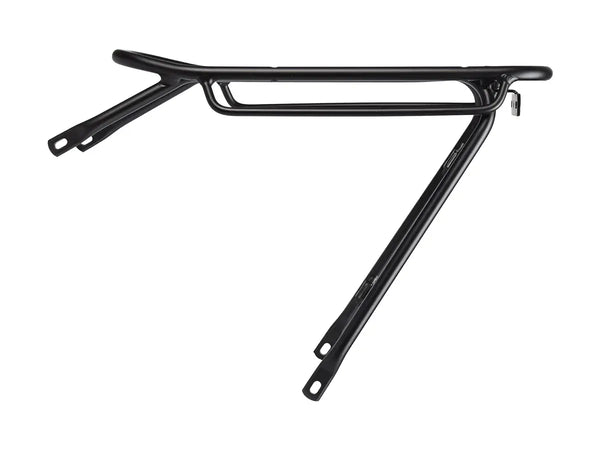
Electric Bike Rear Rack Guide: Smart Storage Solutions
Why Your E-Bike Needs a Rear Rack
We've all been there: you're enjoying the freedom of your electric bike, but you're stuck managing a sweaty backpack or awkwardly balancing shopping bags from your handlebars. It's unsafe and uncomfortable. This common struggle hides the true potential of your e-bike. The key to unlocking its full capability lies in a simple, yet life-changing, accessory: an electric bike rear rack.
This single addition can turn your bike from a recreational vehicle into a daily workhorse, boosting its usefulness and flexibility beyond measure. This guide is your complete resource for understanding, choosing, and safely using a rear rack system. We will cover everything from selecting the perfect rack and deciding on a basket for a bike rear rack to mastering the art of loading your cargo for a safe and stable ride.
Adding a rear storage system to your electric bike is about more than just bolting on a piece of metal; it's about fundamentally changing what your bike can do for you. It's the bridge that connects your e-bike to a world of new possibilities, making it a more integrated and valuable part of your life. Let's break down the core benefits.

Boosted Cargo Capacity: This is the most obvious advantage. A robust electric bike rear rack allows you to carry everything from a week's worth of groceries and your work laptop to camping gear or a picnic lunch. Your carrying capacity is no longer limited to what you can wear.
Improved Safety & Stability: Riding with a heavy backpack raises your center of gravity, making you less stable and more top-heavy. This can be especially noticeable on an already heavier e-bike. Transferring that weight to a low-mounted rack on the bike's frame enhances stability and control.
Enhanced Comfort: Say goodbye to the dreaded sweaty back and strained shoulders that come from wearing a backpack on every ride. Carrying your gear on the bike frees up your body, allowing for a more comfortable, enjoyable, and sweat-free journey.
Unlocking New Adventures: With a reliable cargo system, your e-bike is ready for more than just the daily commute. It becomes your companion for weekend camping trips, beach days, or long-distance tours that were previously impractical.
Increased Versatility: A rear rack is a platform. You can attach a simple basket for quick errands, a pair of waterproof panniers for all-weather commuting, a trunk bag for essentials, or even a compatible child seat. This modularity lets you adapt your bike to the day's specific needs.
E-Bike Specific Considerations
While many bike racks might look similar, electric bikes present a unique set of challenges that make choosing the right rack a critical decision. E-bikes are heavier, often have different frame geometries, and integrate components like batteries and motors that can interfere with standard rack installations. Ignoring these factors can lead to an incompatible purchase or, worse, an unsafe setup.
Frame & Battery Compatibility
The single most important consideration is how a rack will fit with your e-bike's frame and, crucially, its battery. Many popular e-bikes feature batteries mounted on or behind the seat tube, directly where a standard rack's support struts would attach.
This can make fitting a generic rack impossible. Before you buy, always check your bike's frame for dedicated mounting points, often called braze-ons or eyelets.
These are small, threaded holes located on the frame near the rear axle (for the rack legs) and on the seat stays (for the support struts). If your bike lacks these, you may need a specialized rack that uses P-clamps or attaches to the seat post, though these are often less stable and have lower weight limits.
Weight Capacity & Distribution
An electric bike is significantly heavier than a non-electric bike, and the motor's assistance allows you to travel at higher sustained speeds. These factors create greater dynamic forces on all components, including the rack.
A standard rear rack might be rated for 18 kg (about 40 lbs), which is sufficient for light touring on a regular bike. However, for an e-bike, we strongly recommend a rack specifically built and tested for the increased demands.
E-bike specific racks are typically constructed from larger-diameter tubing and have more robust mounting hardware, with weight capacities often starting at 25-27 kg (55-60 lbs) or more. Always respect the manufacturer's stated weight limit to prevent rack failure.
Wheel Size and Brake Type
Racks are not a one-size-fits-all product. They are designed to fit specific wheel sizes (e.g., 20", 26", 700c) to ensure the platform sits level and provides adequate clearance over the tire and fender. Using the wrong size can result in an unstable, tilted platform. Furthermore, the rise of disc brakes on e-bikes has created another compatibility hurdle.
The brake caliper, mounted on the frame near the axle, can interfere with the lower mounting point of a standard rack. To solve this, look for "disc-compatible" racks, which feature a modified leg design or standoffs to provide the necessary clearance around the caliper. For more details on finding the right fit, consult an in-depth buyer's guide from Cycling UK, which provides excellent technical advice.
Choosing Your Ideal Rack and Basket
With the e-bike specific considerations in mind, you can now move on to selecting the perfect system for your needs. This is a two-step process: first, choose the right electric bike rear rack to serve as the foundation, and second, select the cargo carrier—like a basket or panniers—that best fits your lifestyle.
Step 1: Choosing the Right Rack
The material of the rack and its mounting system are two key factors that will determine its strength, weight, and ease of use.
Rack Material Comparison
| Rack Material | Pros | Cons | Best For |
|---|---|---|---|
| Aluminum | Lightweight, naturally rust-resistant, affordable | Less durable than steel, can be difficult to repair if it breaks | Commuting, general errands, and light touring where weight is a concern. |
| Steel (Chromoly) | Extremely strong and durable, can be bent back into shape or welded if damaged | Heavier than aluminum, can rust if the paint is scratched | Heavy-duty touring, carrying very heavy loads, and off-road bikepacking. |
Understanding Mounting Systems
In recent years, several brands have developed proprietary mounting systems that make attaching and removing accessories incredibly simple. Instead of fumbling with straps and clips, these systems allow you to click bags and baskets directly onto the rack in seconds.
Key systems to look for include:
MIK (Mounting Is Key): A very popular system that features a specific profile on the rack deck. MIK-compatible bags and baskets have a key-operated adapter plate on the bottom that locks securely into the rack.
Racktime: This system uses four small holes at the corners of the rack platform. Racktime accessories have "feet" that snap firmly into these holes, offering a stable, rattle-free connection.
AtranVelo System (AVS): Similar to MIK and Racktime, AVS provides a quick-click interface for a wide range of baskets, bags, and crates. If your chosen rack doesn't have one of these integrated systems, you can still use any standard accessory that attaches with hooks, straps, or bolts.
Step 2: Selecting Your Cargo Carrier
Once you have your rack, it's time to choose how you'll carry your things. A simple basket for a bike rear rack is a great start, but there are many options, each with distinct advantages. For a broader overview of options, check out REI's expert advice on choosing racks and bags.
Baskets:
Pros: Extremely easy to use—just toss your items in. Great for bulky or oddly shaped objects like a bag of groceries or a beach towel.
Cons: Items are exposed to the weather and can bounce out on rough terrain if not secured. Less secure against theft.
Best for: Quick grocery runs, trips to the farmer's market, or carrying a backpack without wearing it.
Panniers (Single or Double):
Pros: Keep the center of gravity low for better stability. Often waterproof or water-resistant.
Securely closed to protect contents.
Cons: Require more deliberate packing. Can be more expensive.
A single pannier can unbalance the bike if heavily loaded.
Best for: All-weather commuting, multi-day touring, and anyone needing to carry a laptop and change of clothes securely.
Trunk Bags:
Pros: Mount on top of the rack, offering an aerodynamic profile. Easy to access and often feature insulated compartments.
Cons: Smaller capacity than panniers. Can raise the center of gravity more than panniers do.
Best for: Carrying daily essentials like a lock, repair kit, lunch, and a light jacket.
Crates (Wooden/Plastic):
Pros: Massive capacity and very durable. Excellent for a utilitarian or DIY aesthetic.
Cons: Can be heavy and bulky, adding significant weight even when empty. Permanently or semi-permanently mounted.
Best for: Creating a true cargo bike for hauling large items, delivery jobs, or ambitious DIY projects.

The Art of Safe Loading
Owning an electric bike rear rack is one thing; using it safely and effectively is another. Many riders, new and experienced, underestimate how loading cargo can dramatically change a bike's handling.
We've learned from experience that a few simple principles can be the difference between a smooth, confident ride and a wobbly, dangerous one. Competing guides often focus on installation but miss this crucial, practical knowledge.
The most important concept to understand is the center of gravity. Your e-bike is designed to be stable with its weight centered low and between the wheels.
When you add cargo to a rear rack, you are adding weight high up and behind the rear axle. This raises the bike's overall center of gravity and shifts it backward, which can make the bike feel "tippy" and the front wheel feel light, potentially affecting steering control.
Here are our essential rules for safe loading, learned from thousands of miles on the road:
Keep Heavy Items Low and Forward: This is the golden rule. When using panniers, always place the heaviest items—like a U-lock, tools, or cans of food—at the bottom of the bags. This keeps the center of gravity as low as possible. If you must place a heavy item on top of the rack (in a basket or trunk bag), try to position it as far forward (closer to you) as possible.
Balance Your Load Side-to-Side: If you are using two panniers, distribute the weight as evenly as possible between them. Riding with one heavily loaded pannier and one empty one will cause the bike to pull to one side, forcing you to constantly correct and making you unstable, especially at low speeds or when stopping. If you only need to use one pannier for a light load, it's manageable, but for any significant weight, balance is key.
Secure Everything Tightly: This cannot be overstated. Any item that can shift, swing, or fall is a hazard. For baskets and crates, use a cargo net or bungee cords to firmly secure your load. Ensure no straps, cords, or bag flaps can dangle and get caught in the rear wheel's spokes—this can cause an immediate and catastrophic stop. Before every ride, give your load a good shake to ensure nothing is loose.
Do a Test Ride: After loading up, especially with a new or unusually heavy load, take a moment to ride slowly in a safe area. Get a feel for how the bike accelerates, turns, and brakes with the added weight. You'll notice it takes longer to stop and may feel less nimble in corners. This brief adjustment period will build your confidence before you merge into traffic. By internalizing these principles, you move beyond simply carrying things to intelligently managing your cargo, ensuring every ride is as safe as it is useful.
Frequently Asked Questions
Q: Can I install any rear rack on my electric bike?
A: No, not all racks are compatible with e-bikes. You need to check for proper mounting points on your frame and ensure the rack can clear your battery and any disc brakes. Always choose a rack specifically rated for e-bike use with higher weight capacity.
Q: What's the maximum weight I can carry on my electric bike rear rack?
A: This depends on your specific rack and bike combination. Most e-bike racks can handle 25-27 kg (55-60 lbs), but always check both your rack's rating and your bike manufacturer's recommendations. Never exceed the stated weight limits.
Q: Do I need special tools to install an electric bike rear rack?
A: Most installations require basic tools like Allen keys and possibly a wrench set. If your bike has proper mounting points, installation is usually straightforward. However, if you need P-clamps or have a complex setup, consider having a bike shop do the installation.
Q: Will adding a rear rack affect my e-bike's performance?
A: A quality rack adds minimal weight when empty and shouldn't noticeably affect performance. However, loaded cargo will change your bike's handling, making it feel heavier and affecting acceleration and braking. Always do a test ride after loading cargo.
Q: Can I use a basket and panniers at the same time on my rear rack?
A: This depends on your rack design and the specific accessories. Some racks can accommodate both, but it may limit capacity and access. Generally, it's better to choose one primary cargo solution that best fits your needs rather than trying to use multiple systems simultaneously.












































Leave a comment